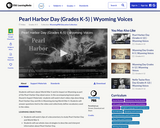
Students will learn about World War II and its impact on Wyoming as part of the Pearl Harbor Day observance.
- Subject:
- English Language Arts
- Speaking and Listening
- Material Type:
- Activity/Lab
- Lesson
- Provider:
- Wyoming PBS
- Date Added:
- 09/17/2019

Students will learn about World War II and its impact on Wyoming as part of the Pearl Harbor Day observance.

This lesson may be used with Launguge Arts, Writing, and Social Studies. The students will learn about various people who were influencial in changing the world through civil rights. They students will write a dream about something they would like to do to make the world better.
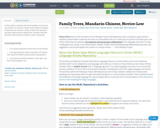
In this activity, students will work together to interview one another to construct family trees. Students will pair off and ask one another a series of interview questions and draw their partners family tree. Students will then introduce their partners family to other classmates.
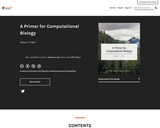
Short Description:
Now available in print at Amazon.com and via the OSU Press! Data Dashboard
Long Description:
A Primer for Computational Biology aims to provide life scientists and students the skills necessary for research in a data-rich world. The text covers accessing and using remote servers via the command-line, writing programs and pipelines for data analysis, and provides useful vocabulary for interdisciplinary work. The book is broken into three parts: Introduction to Unix/Linux: The command-line is the “natural environment” of scientific computing, and this part covers a wide range of topics, including logging in, working with files and directories, installing programs and writing scripts, and the powerful “pipe” operator for file and data manipulation. Programming in Python: Python is both a premier language for learning and a common choice in scientific software development. This part covers the basic concepts in programming (data types, if-statements and loops, functions) via examples of DNA-sequence analysis. This part also covers more complex subjects in software development such as objects and classes, modules, and APIs. Programming in R: The R language specializes in statistical data analysis, and is also quite useful for visualizing large datasets. This third part covers the basics of R as a programming language (data types, if-statements, functions, loops and when to use them) as well as techniques for large-scale, multi-test analyses. Other topics include S3 classes and data visualization with ggplot2.
Word Count: 111597
(Note: This resource's metadata has been created automatically by reformatting and/or combining the information that the author initially provided as part of a bulk import process.)

In this activity students will practice ordering food, discussing their meal, and paying for their meal.
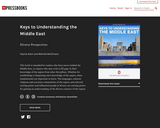
Diverse Perspectives
Short Description:
This book is intended for readers who have never studied the Middle East, or experts who may wish to fill gaps in their knowledge of the region from other disciplines. Whether for establishing or deepening one’s knowledge of the region, these fundamentals are important to know. The languages, cultural, religious and sectarian communities of the region, and selected turning points and influential people in history are starting points for gaining an understanding of the diverse contexts of the region.
Long Description:
This book is intended for readers who have never studied the Middle East, or experts who may wish to fill gaps in their knowledge of the region from other disciplines. Whether for establishing or deepening one’s knowledge of the region, these fundamentals are important to know. The languages, cultural, religious and sectarian communities of the region, and selected turning points and influential people in history are starting points for gaining an understanding of the diverse contexts of the region. It is based on introductory and graduate courses on the contemporary Middle East, which the Center’s director, Dr. Alam Payind, has been teaching for the past 30 years. The book’s co-author, Melinda McClimans, has taught these and other courses with him, as well as her own, for the past 15 years. The material is intended engage with diverse – even conflicting – cultural and historical perspectives, and ways of perceiving both Middle Eastern and world history from perspectives within the region. It is not intended to reinforce a monolithic or matter-of-fact perception of the region. For this and many other reasons, images are an important aspect of the knowledge presented. Each chapter starts with links to its image galleries, along with other visual aids and key elements.
Word Count: 28082
(Note: This resource's metadata has been created automatically as part of a bulk import process by reformatting and/or combining the information that the author initially provided. As a result, there may be errors in formatting.)
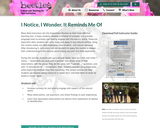
Many field instructors cite this Exploration Routine as their most effective teaching tool. It helps students develop a mindset of curiosity, and provides language tools to actively and directly engage with the natural world. These are important skills students can carry away and apply in any natural setting. Using this routine makes any field experience more student- and nature-centered. After introducing it, instructors can ask students to apply the routine to deepen their understanding of the natural world during any part of a field experience.
During the activity, students pick up a natural object, such as a leaf, and make “I notice…” statements out loud with a partner, then share some of their observations with the group. They do the same with “I wonder…” questions, and with “It reminds me of…” connections. Then, students practice using these tools while exploring whatever they find interesting. This simple routine can help students get beyond seeing nature as a “green blur,” and lead them to never be bored in nature again.

Students will read an article about the relevance of politics in Julius Caesar and compare it to a real-world experience as well as create a visual representation of its relation to specific scenes in Julius Caesar.
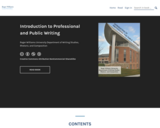
Introduction to Professional and Public Writing is dedicated to introducing students to a lifelong commitment of engaging with these problems that matter. As an academic discipline, Writing Studies’ contribution to engaging with problems can be applied to all areas of study and to all types of problems because we focus on the way language itself—discourse—is created and exchanged in the service of engaging problems. Writing Studies deepens students’ rhetorical awareness of how the ongoing conversations between groups of people shape and express the problems that matter. According to Aristotle, being rhetorically aware means understanding “the best means of persuasion in any given situation.” It means understanding the deep logic that explains why an author has selected a particular genre to deliver a particular message to an audience. We all know writing is hard, but we commit to writing well because of the vital work it does in the world in helping humans preserve and extend our ability to come together. As theorist Anne Beaufort writes, “[w]hat writing expertise is ultimately concerned with is becoming engaged in a particular community of writers who dialogue across texts, argue, and build on each other’s work” (18).
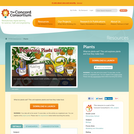
What do plants eat? This unit explores plants and how they make food.
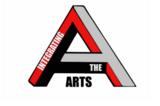
This resource was created by Jenna McAfee, in collaboration with Dawn DeTurk, Hannah Blomstedt, and Julie Albrecht, as part of ESU2's Integrating the Arts project. This project is a four year initiative focused on integrating arts into the core curriculum through teacher education, practice, and coaching.
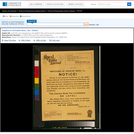
Poster is text only, printed on company letterhead. Text continues: Owing to the peculiar conditions of war possibilities between the United States and Germany, we must insist that all employees of this Corporation be Americans by heart, disregarding their place of birth, and absolutely refrain from using any other language than English, and also refrain from discussing war conditions. This country gives you a livelihood-be loyal! We, Gossler Bros., have never used any discrimination regarding nationality or religion in the past, nor will we now and the future. We are Americans! Gossler Bros., Inc. Forms part of: Willard and Dorothy Straight Collection.

Use Purdue OWL to annotate the paper Scale and Cross-Scale Dynamics: Governance and Information in a Multilevel World

D-Lab Development addresses issues of technological improvements at the micro level for developing countries—in particular, how the quality of life of low-income households can be improved by adaptation of low cost and sustainable technologies. Discussion of development issues as well as project implementation challenges are addressed through lectures, case studies, guest speakers and laboratory exercises. Students form project teams to partner with mostly local level organizations in developing countries, and formulate plans for an IAP site visit. (Previous field sites include Ghana, Brazil, Honduras and India.) Project team meetings focus on developing specific projects and include cultural, social, political, environmental and economic overviews of the countries and localities to be visited as well as an introduction to the local languages.
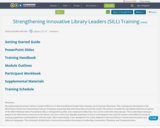
Strengthening Innovative Library Leaders (SILL) is a 2-day foundational leadership training curriculum for librarians. The training was developed at the Mortenson Center for International Library Programs in partnership with librarians around the world. The project is funded by the Global Libraries Program of the Bill & Melinda Gates Foundation.
SILL is designed for public and community librarians, but can be used with other groups. This leadership training is meant to be delivered to everyone in the library, not just a select few. Equally important is that it is developed to be used by trainers with different levels of training experience and familiarity with the topic. Most importantly, it was designed to be easily adapted to the local library context and translated into different languages.
The training is divided into 4 interactive modules focusing on Leadership, Innovation, Planning, and Communication.

Tremendous Trees or Tree-mendous Trees encourages students to use inquisitive and creative behaviors, to think like a scientist. The module extends the Essential Strategies of Attributes and Questioning introduced in Kindergarten and First Grade. Students use questions to approach problems and identify attributes to sort, classify, and make inferences to create analogies on observational data about our world using this module for all students. The classroom teacher should work with a specialist or special educator to find or develop alternate activities or resources for visually impaired students, where appropriate.
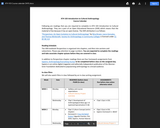
Introduction to Cultural Anthropology course calendar using the open textbook Perspectives: http://sacc.americananthro.org/publication/open-source-textbook/
Course Description
Considers contemporary human cultures from an anthropological perspective. Covers fieldwork, language, race, gender, sex and marriage, kinship, politics, world view, religion, economics, and globalization from a cross-cultural perspective. This course compares cultures found around the globe, focusing closely upon at least two specific cultures, with extended discussion of additional cultures and societies as appropriate. Greater understanding of particular cultures will be achieved through an application of the comparative method.
Upon completion of the course students should be able to:
Describe basic concepts, methods, and theories associated with cultural anthropology.
Use an understanding of anthropology to identify and compare values, beliefs, norms, economic systems, and social organization or institutions in a variety of societies in different world regions.
Examine systems of power and social justice issues related to U.S. society and other cultures from an anthropological perspective.
Explore fieldwork methods and ethical considerations of doing anthropological fieldwork.
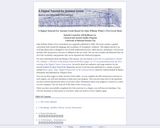
John William White's First Greek Book was originally published in 1896. The book contains a guided curriculum built around the language and vocabulary of Xenophon’s Anabasis. This digital tutorial is an evolving edition that is designed to run on both traditional browsers, tablet devices, and phones. Each lesson includes drill and practice exercises in addition to the text itself. The site also includes tab-delimited files for all of the vocabulary and grammar that can be imported into flashcard programs.
For more information about the design of the tutorial, you can read an article that was published in Volume 107, Number 1, Fall 2013 of the journal Classical World on pages 111-117 or a presentation from the 2013 meeting of the Digital Classics Association. An article about the audiences and usage statistics for the tutorial entitled An Open Tutorial for Beginning Ancient Greek has been published in a volume of papers entitled Word, Space, Time: Digital Perspectives on the Classical World. edited by Gabriel Bodard & Matteo Romanello and published by Ubiquity Press.
You can use these pages to study Ancient Greek online. As you complete the drill and practice exercises in each chapter, you will earn drachmas to help track your progress. The exercises keep track of the questions you have missed and presents those to you more often. Information about your progress is stored in a cookie on your computer. You can clear all of this data on the settings page.
When you have successfully completed all of the exercises in a chapter, you will have ten drachmas. You will lose drachmas as time passes so you know when you need to review chapters again.
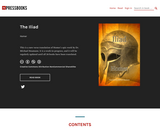
Short Description:
A new, 21st century verse translation of Homer's epic work, translated by Michael Heumann.
Long Description:
There is no greater introduction to world literature than Homer’s Iliad. The great epic poem tells the story of the Bronze Age war between the Achaeans (Greeks) and Trojans, the great warriors who did the fighting, the woman they were fighting for (and fighting over), and the gods who egged them on.
This is a new, 21st century verse translation by Michael Heumann. It seeks to retain the spirit and language of Homer’s original Greek while making it readable and enjoyable for a modern audience.
Michael Heumann is a Professor of English at Imperial Valley College in California. He holds a PhD in English from the University of California, Riverside. This is his first translation.
Word Count: 149411
(Note: This resource's metadata has been created automatically by reformatting and/or combining the information that the author initially provided as part of a bulk import process.)
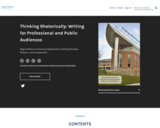
Thinking Rhetorically: Writing in Professional and Public Contexts is dedicated to introducing students to a lifelong commitment of engaging with these problems that matter. As an academic discipline, Writing Studies’ contribution to engaging with problems can be applied to all areas of study and to all types of problems because we focus on the way language itself—discourse—is created and exchanged in the service of engaging problems. Writing Studies deepens students’ rhetorical awareness of how the ongoing conversations between groups of people shape and express the problems that matter. According to Aristotle, being rhetorically aware means understanding “the best means of persuasion in any given situation.” It means understanding the deep logic that explains why an author has selected a particular genre to deliver a particular message to an audience. We all know writing is hard, but we commit to writing well because of the vital work it does in the world in helping humans preserve and extend our ability to come together. As theorist Anne Beaufort writes, “[w]hat writing expertise is ultimately concerned with is becoming engaged in a particular community of writers who dialogue across texts, argue, and build on each other’s work.”